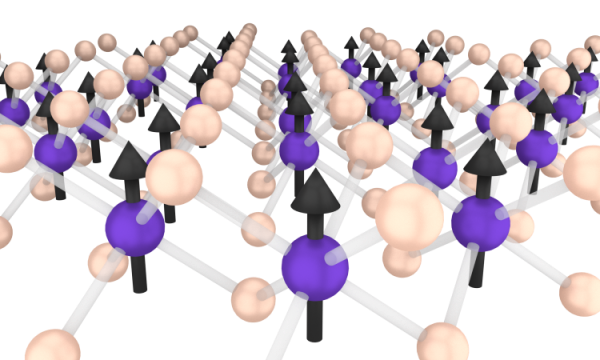Atomically Thin Magnet Device Could Revolutionize Modern Technologies
Atomically thin magnetic devices could pave the way for new technologies in the field of cloud computing and consumer electronics. The modern digital technologies are made of magnetic materials. There has been a breakthrough by a team from the University of Washington in encoding data using magnets which are a few layers of atoms in thickness. This will be a leap forward in cloud computing technology and consumer electronics whereby data storage can be increased and there will be great improvements in energy efficiency.
According to reports that appeared in the ‘Science’ journal, there was a study conducted by researchers wherein they used very thin materials to control the electron flow based on the direction of their spins. The electronic spins are comparable with tiny subatomic magnets. Sheets of chromium tri-iodide (CrI3), a material considered as a 2-D magnetic insulator were used in the materials.
They used four sheets and each sheet was only atoms thick. It created an atomically thin magnetic system that could block electrons based on their spins and at the same time exerted 10 times stronger control than the other methods. This created a possibility of storing data on atomically thin magnets. The team was able to electrically control the magnetic properties of the atomically thin magnet.
The main challenge is to increase data storage and at the same time reduce the operation energy. The team is finding out how the atomically thin magnet could increase memory storage by taking advantage of the electron spins in each individual sheet. The researchers are looking at the possibility of achieving an increase in memory storage and reduction in operation energy. They are looking at ways of engineering atomically thin magnetic memory devices with lesser amount of energy consumption than what is presently achievable.
The working principle behind the atomically thin magnetic device
Two layers of CrI3 were sandwiched between the conducting sheets of graphene. Based on the spin alignment between the CrI3 sheets, there are two possibilities. One is the electrons can flow unimpeded between the graphene sheets or they can be blocked from flowing. These two possibilities could act as bits of the binary code for encoding data. They could act as the bits – zeroes and ones.
The operational units of this type of memory are magnetic tunnel junctions (MTJ) or magnetic gates that can either impede or allow the flow of electrical current depending on the spin alignment in the junction. This magnetic gate helps to figure out the data storage on a small scale.
With four layers of CrI3 in the atomically thin magnet, the researchers discovered the possibility for multi-bit information storage. If we consider two CrI3 layers the spins are either in the same direction or in the opposite direction. This gives rise to two different rates for the electrons to flow through the magnetic gate.
When there are three or four CrI3 layers, there is a possibility of different combinations for the spin alignment between each layer giving rise to multiple, distinct rates for the electrons to flow through the atomically thin magnetic material from from graphene sheet to the next.
This enables the storage devices to have not only two choices but many more choices to store data. Thus the atomically thin magnetic devices that use the CrI3 junctions will be more efficient and will be able to store more data.
from Mono-live https://ift.tt/2wj9qQF
via IFTTT
from WordPress https://ift.tt/2FR87YJ

No comments:
Post a Comment